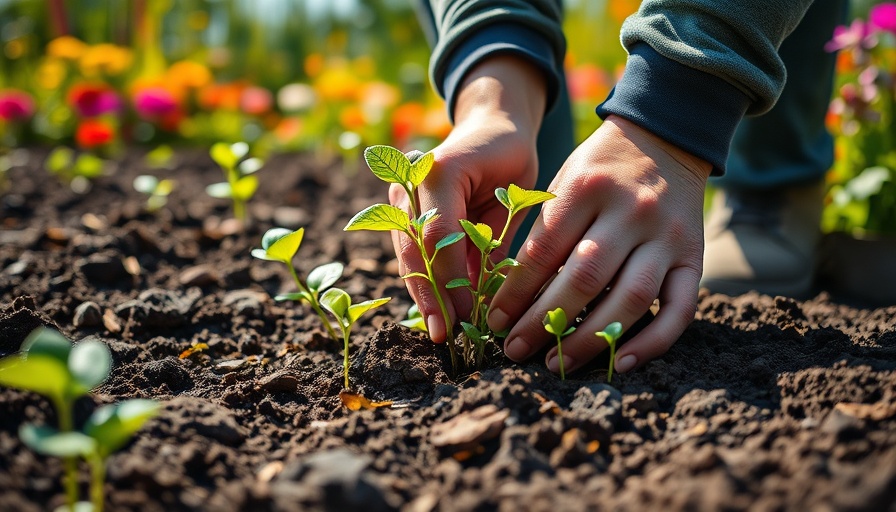
Understanding the Art of Fall Planting
As the warm days of summer graciously cede to the crisp autumn air, the gardening world shifts gears. Fall planting presents a unique opportunity for garden enthusiasts to cultivate a lush landscape, whether through vibrant flower beds or a bountiful vegetable garden. However, even seasoned gardeners can slip into common pitfalls. This guide aims to illuminate those missteps while providing you with the knowledge to thrive in your fall planting endeavors.
Avoiding Overplanting
One of the biggest mistakes budding gardeners make is cramming too many plants into a single spot. The urge to create a full and flourishing garden can lead to overcrowding. Not only do plants need space to grow, but proper airflow is essential to prevent pests and diseases. Balance is key! A well-planned flower garden or vegetable garden should leave enough room between seedlings, ensuring each has access to sunlight and nutrients.
Timing Is Everything
Timing your planting is crucial when establishing your garden. Planting too late in the season can mean that your seedlings won't have enough time to establish roots before the first frost. Conversely, planting too early might subject your young plants to unexpected cold snaps. Utilize a gardening calendar tailored to your local climate to maximize your growing season and ensure healthy plants.
Choosing the Right Varieties
As fall unfolds, it's important to select plants that thrive in cooler temperatures. This might seem straightforward, but many novice gardeners mistakenly choose varieties that are not suited for autumn planting. Opt for perennials or cold-tolerant vegetables, like kale and broccoli, which can endure the chill. When considering flowers, look for varieties that bloom in late fall to extend your enjoyment of the garden.
Soil Preparation: The Foundation of Success
Never underestimate the power of healthy soil! Many gardeners neglect to amend their garden soil, making them vulnerable to poor plant growth. Incorporating organic compost not only enhances nutrition but also improves soil structure. This means better drainage, moisture retention, and top-notch results. Preparing your garden soil before planting can dramatically enhance the resilience of your plants.
Watering Wisely
One common oversight is watering during unexpected rainfall or neglecting moisture levels as temperatures drop. Many are surprised to learn that plants still require nourishment even in the cooler months. Testing the soil with your fingers can help gauge moisture levels. If the top inch of soil feels dry, it's time to give it a good soak. Additionally, consider setting up a garden watering system that caters to your plants' needs efficiently.
Garden Design and Layout
A poorly designed garden layout can hinder growth and accessibility. As you plan your garden design, think about the height, spread, and needs of your plants. Taller varieties should be placed toward the back, with shorter ones in front, ensuring every plant gets its fair share of sunlight. Container gardening also allows you to experiment with design while providing mobility and ease of care.
Learning from Others: Community Insights
Connect with local gardening communities, either through gardening websites or social media platforms. Sharing experiences and watching what works for neighbors can provide invaluable insights. Classes on gardening techniques or workshops on organic gardening can also deepen your knowledge. Every gardener has a story to share, and these communal experiences enrich our understanding of the green thumb journey.
Looking Ahead: Fall Planting Trends
As we progress into future seasons, expect to see a rise in eco-friendly gardening practices. More gardeners are leaning towards organic solutions and sustainable methods, such as utilizing leftover food scraps to create compost or reusing containers for growing herbs. Keeping updated with the latest trends in plant care and garden accessories will not only elevate your skills but can help contribute positively to our planet.
Conclusion: Embrace Autumn’s Bounty
With the right knowledge and preparation, fall planting can turn into a rewarding experience filled with vibrant colors and delicious harvests. So take this opportunity to enrich your backyard garden while enjoying the beauty of nature’s transition. Remember, every gardener makes mistakes – it's how we learn and grow. Share your fall gardening journey with friends and inspire others to take part in the joy of cultivating green life!
 Add Row
Add Row  Add
Add 




Write A Comment